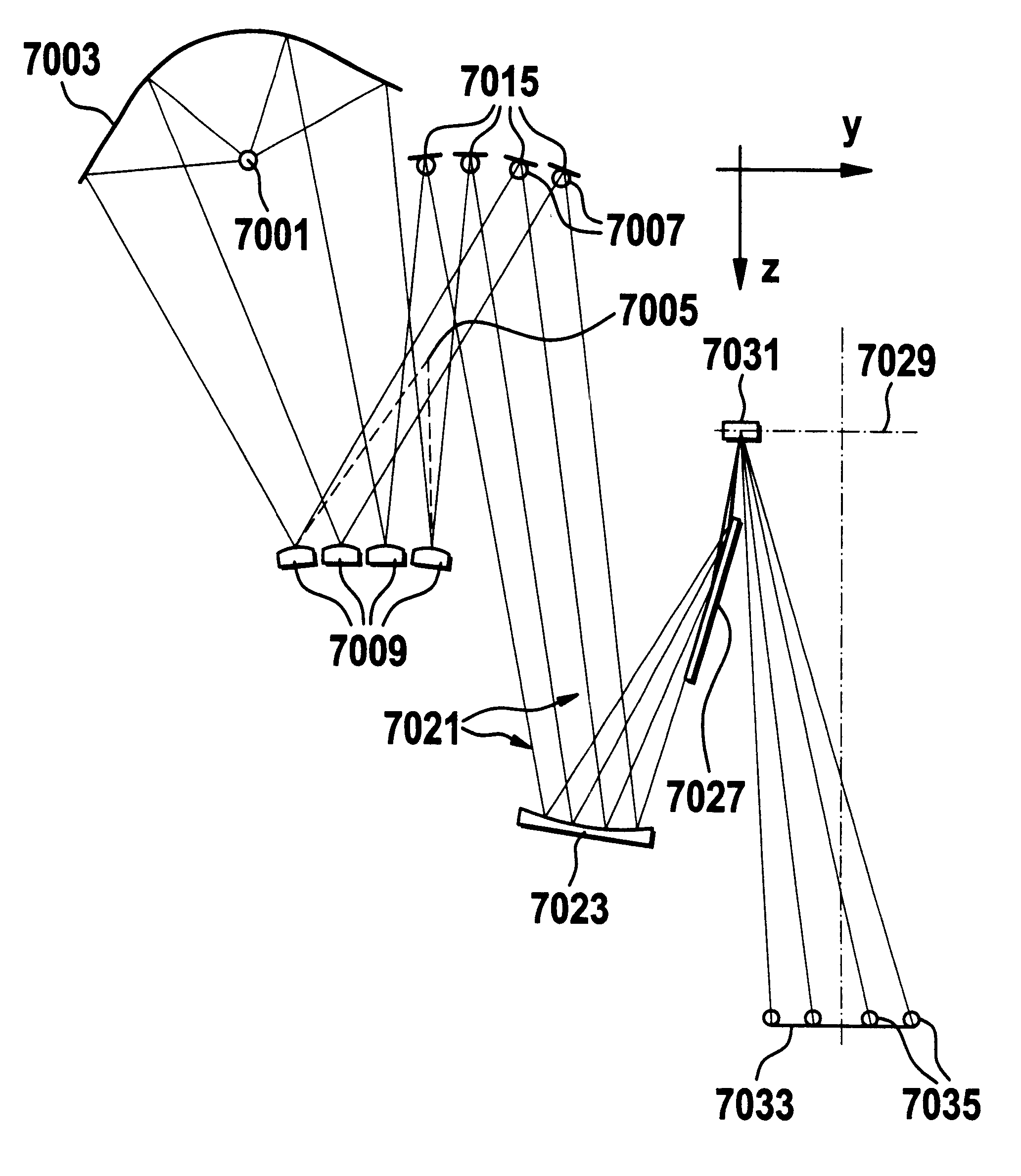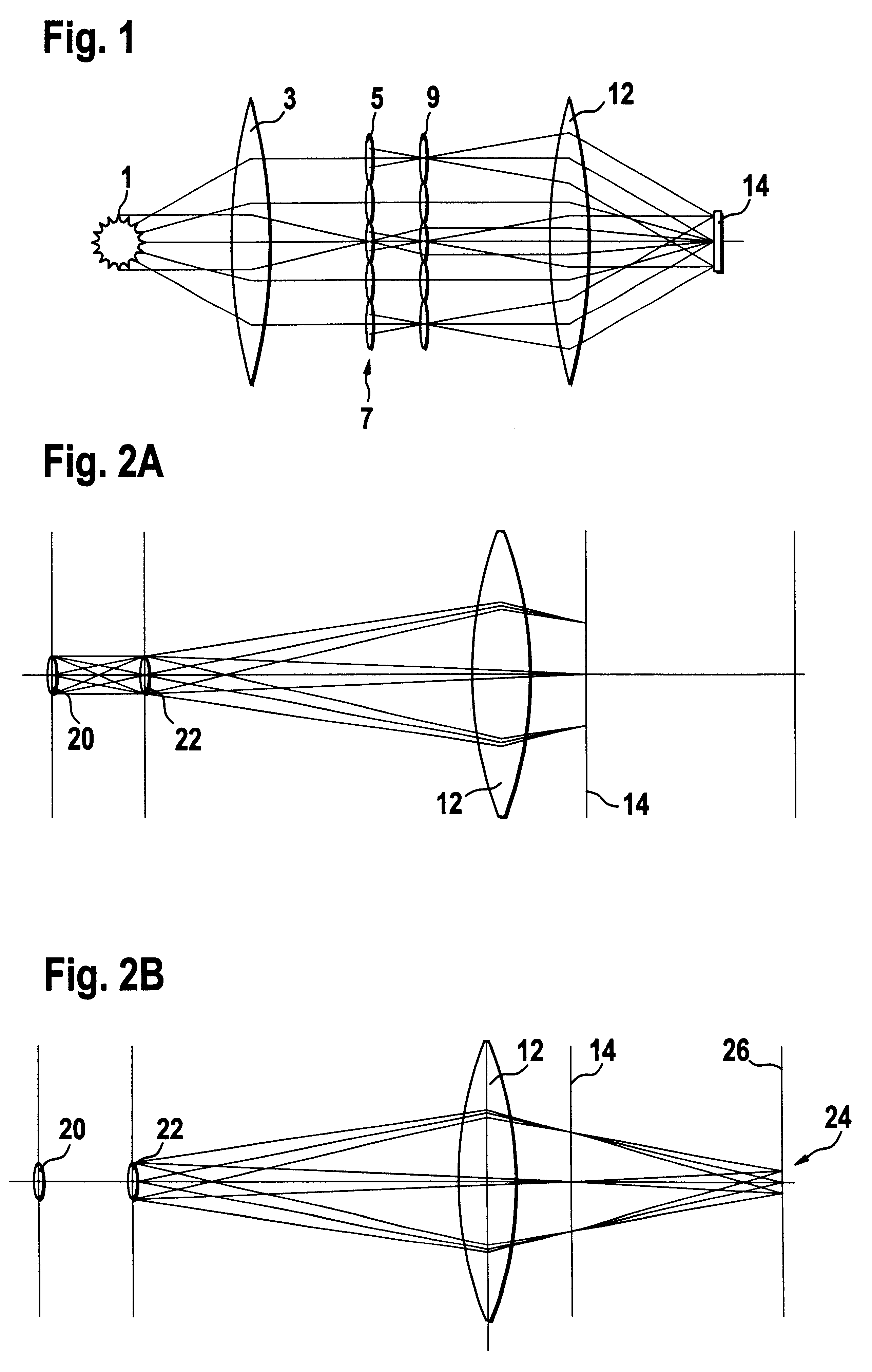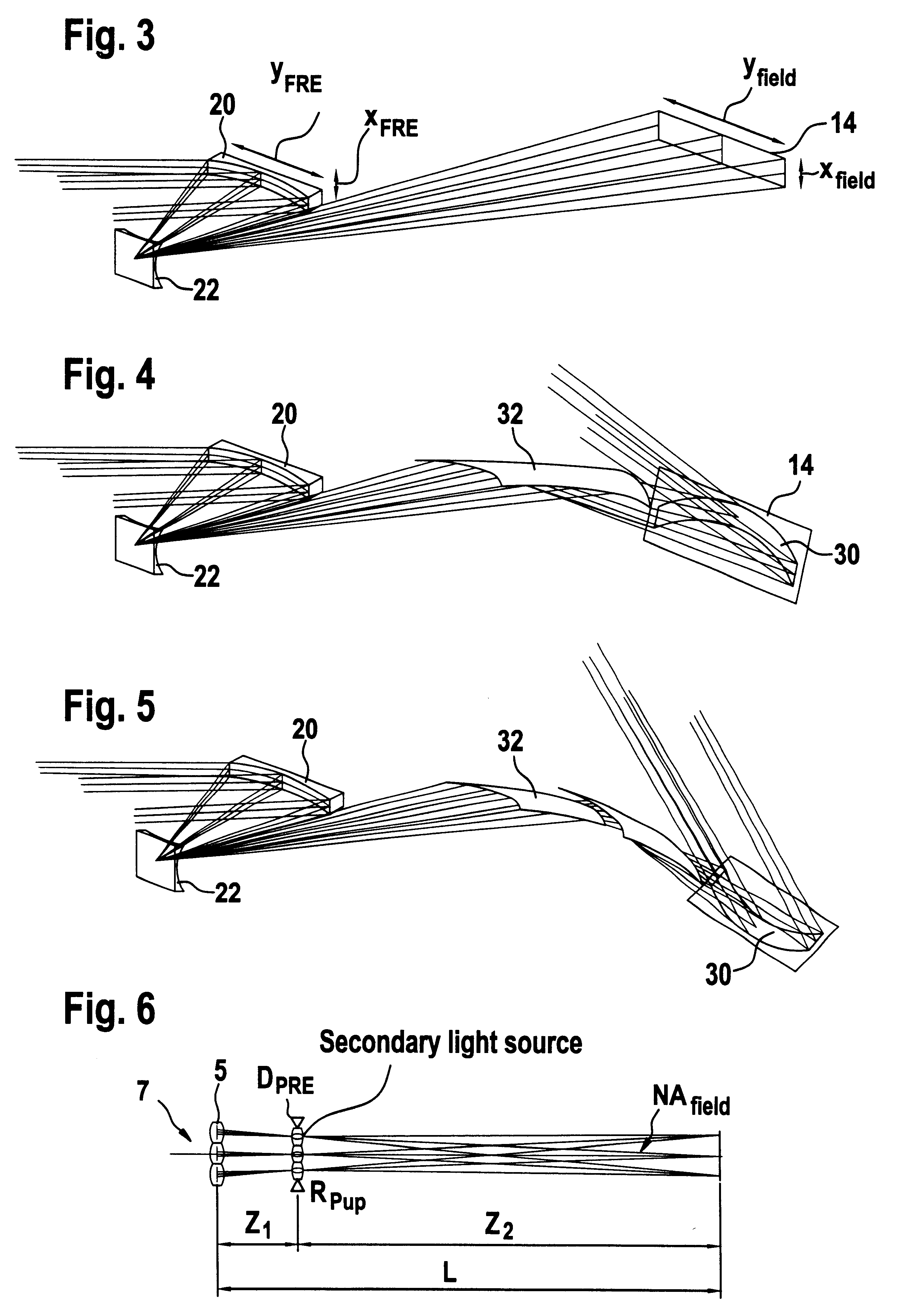Illumination system particularly for microlithography
- Summary
- Abstract
- Description
- Claims
- Application Information
AI Technical Summary
Benefits of technology
Problems solved by technology
Method used
Image
Examples
Embodiment Construction
It shall be shown theoretically on the basis of FIGS. 1-20, how a system can be provided for any desired illumination distribution in a plane, which satisfies the requirements with reference to uniformity and telecentricity,
In FIG. 1, a principle diagram of the beam path of a system with two plates with raster elements is illustrated. The light of the primary light source 1 is collected by means of a collector lens 3 and converted into a parallel or convergent light beam. The field raster elements 5 of the first raster element plate 7 decompose the light beam and produce secondary light sources at the site of the pupil raster elements 9. At the position of the secondary light sources the pupil plane of the illumination system is arranged. The field lens 12 images these secondary sources in the exit pupil of the illumination system or the entrance pupil of the subsequent projection objective forming tertiary light sources. The field raster elements 5 are imaged by the pupil raster el...
PUM
 Login to View More
Login to View More Abstract
Description
Claims
Application Information
 Login to View More
Login to View More - R&D
- Intellectual Property
- Life Sciences
- Materials
- Tech Scout
- Unparalleled Data Quality
- Higher Quality Content
- 60% Fewer Hallucinations
Browse by: Latest US Patents, China's latest patents, Technical Efficacy Thesaurus, Application Domain, Technology Topic, Popular Technical Reports.
© 2025 PatSnap. All rights reserved.Legal|Privacy policy|Modern Slavery Act Transparency Statement|Sitemap|About US| Contact US: help@patsnap.com



